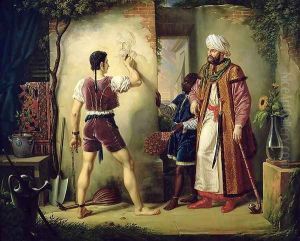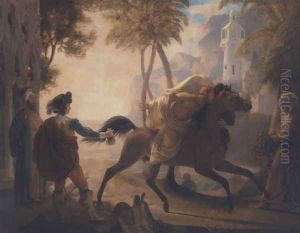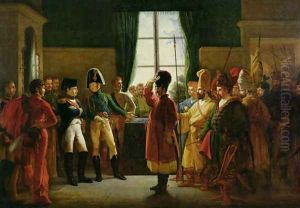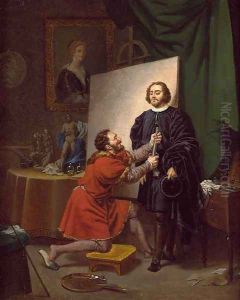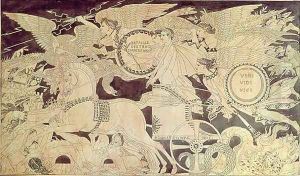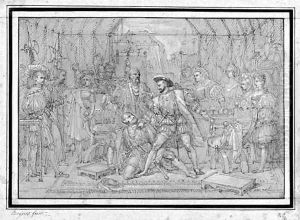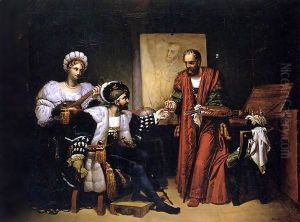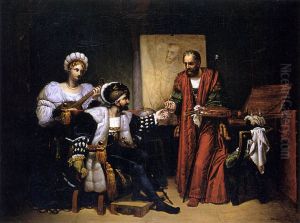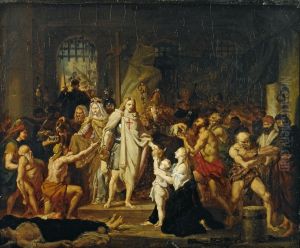Pierre-Nolasque Bergeret Paintings
Pierre-Nolasque Bergeret was a French painter and lithographer born on January 30, 1782, in Bordeaux, France, and died on February 21, 1863, in Paris. Bergeret's artistic journey began in his youth, influenced by the neoclassical movement that dominated European art in the late 18th and early 19th centuries. He studied under the prominent neoclassical painter Jacques-Louis David, who was a significant influence on Bergeret's early work. Bergeret's training under David equipped him with a mastery of classical forms, a keen sense of composition, and a predilection for themes from history and mythology.
Throughout his career, Bergeret remained a committed neoclassicist, but his work also shows signs of the transition to Romanticism, which began to emerge as a dominant movement in the early 19th century. His paintings are characterized by their detailed historical accuracy, elaborate compositions, and the emotional depth of their subjects. Bergeret was not just a painter; he was also an accomplished lithographer, contributing to the popularization of lithography in France. His lithographs included subjects similar to his paintings, such as scenes from ancient history and literature, and were praised for their precision and clarity.
Bergeret's contributions to French art were recognized in his time. He was awarded several commissions for decorative works in significant public buildings in Paris, including the Palais Bourbon and the Palais du Luxembourg. Despite his successes, Bergeret's name is not as well-known today as that of some of his contemporaries. However, his work provides a fascinating insight into the transition period between Neoclassicism and Romanticism in French art. Bergeret's legacy is preserved in the collections of various museums in France and around the world, where his paintings and lithographs continue to be studied and admired for their beauty and historical value.
